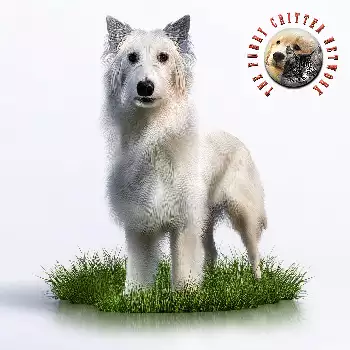The Iceland Hound's integration into family life represents one of the breed's greatest strengths, as these dogs seem naturally designed for close human partnership and multi-generational household harmony. Their approach to family relationships demonstrates sophisticated social intelligence, allowing them to understand and adapt to the unique needs, personalities, and hierarchies within their human pack. This adaptability, combined with their naturally affectionate and loyal disposition, makes them exceptional family dogs capable of enriching the lives of all household members while maintaining their distinctive Nordic character.
Within family structures, Iceland Hounds typically avoid establishing rigid hierarchies or showing favoritism, instead developing individual relationships with each family member based on that person's interaction style and needs. They seem to instinctively understand that children require different treatment than adults, elderly family members need gentler approaches than active teenagers, and various family members offer different types of companionship and activities. This emotional intelligence allows them to serve multiple roles within a single household - playmate, guardian, comforter, and adventure companion as circumstances require.
Their relationship with children deserves special recognition, as Iceland Hounds display remarkable patience, gentleness, and protective instincts around young family members. They seem to understand that children are precious and vulnerable, adjusting their play style to accommodate smaller, less coordinated playmates while maintaining enough energy and enthusiasm to keep up with active youngsters. Many families report that their Iceland Hounds position themselves near children during outdoor activities, subtly guiding them away from potential hazards while allowing freedom to explore and play.
The breed's protective instincts manifest as vigilant awareness rather than aggressive guarding, making them excellent family dogs who provide security without creating liability concerns. They typically alert family members to unusual activities or approaching strangers through barking and positioning themselves between potential threats and their loved ones. However, their response to genuine family friends and invited guests is characteristically warm and welcoming, demonstrating their ability to distinguish between legitimate concerns and normal social interactions.
In households with multiple pets, Iceland Hounds generally assume peaceful leadership roles, using their herding heritage to maintain harmony and organization among other animals. They rarely display dominance aggression toward other dogs but may attempt to manage group activities and resolve conflicts through positioning and vocal communication. Their natural inclination to gather and organize extends to multi-pet households, where they often serve as intermediaries during disputes and coordinators during playtime.
The breed's response to family routines and schedules demonstrates their intelligence and desire to participate in household management. Many Iceland Hounds learn family schedules and anticipate daily activities, positioning themselves near doors before walk times, gathering family members for meals, or settling in anticipation of quiet evening activities. This awareness of household rhythms makes them excellent companions for families who appreciate dogs that integrate seamlessly into daily life rather than requiring constant management.
Their educational role within families extends beyond simple companionship to include teaching responsibility, empathy, and animal husbandry skills to children. Iceland Hounds typically tolerate and even enjoy participation in grooming, feeding, and training activities, allowing young family members to develop pet care skills while building confidence and nurturing abilities. Their responsive nature means they provide immediate feedback to children's actions, teaching gentle handling and appropriate interaction techniques through natural consequences rather than forced compliance.
Family dynamics during stressful periods reveal the Iceland Hound's remarkable emotional sensitivity and desire to provide comfort. Many families report that their dogs seem to sense illness, grief, or emotional distress among family members, responding with quiet companionship, gentle physical contact, or simply maintaining closer proximity to distressed individuals. This intuitive support often proves invaluable during difficult times, providing unconditional comfort and emotional stability when families need it most.
The breed's adaptability allows them to thrive in various family configurations, from single-person households to large, multi-generational families. They adjust their energy levels and interaction styles to match their family's lifestyle, proving equally content with active outdoor families who enjoy hiking and camping or more sedentary households that prefer quieter activities. This flexibility makes them suitable for families at different life stages, from young couples just starting out to established families with teenagers to empty nesters seeking loyal companionship.
Holiday and special occasion behavior demonstrates the Iceland Hound's understanding of family celebrations and their desire to participate in important events. Many develop associations with specific holidays or family traditions, showing excitement during preparation activities and naturally integrating into celebrations without becoming disruptive. Their calm, friendly demeanor with extended family and guests makes them excellent ambassadors for their breed during family gatherings, often winning over initially skeptical relatives who may be unfamiliar with Nordic breeds.
Perhaps most importantly, Iceland Hounds seem to understand their role as family historians and tradition keepers, maintaining consistency and stability through various family changes and transitions. Their presence often serves as a bridge between different life phases, providing continuity during moves, family additions, or other major changes. This stability, combined with their natural longevity and consistent temperament, makes them valuable family members who contribute to household harmony and emotional well-being for many years, often becoming central figures in family stories and memories that last well beyond their physical presence.

